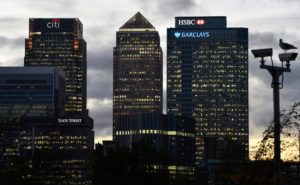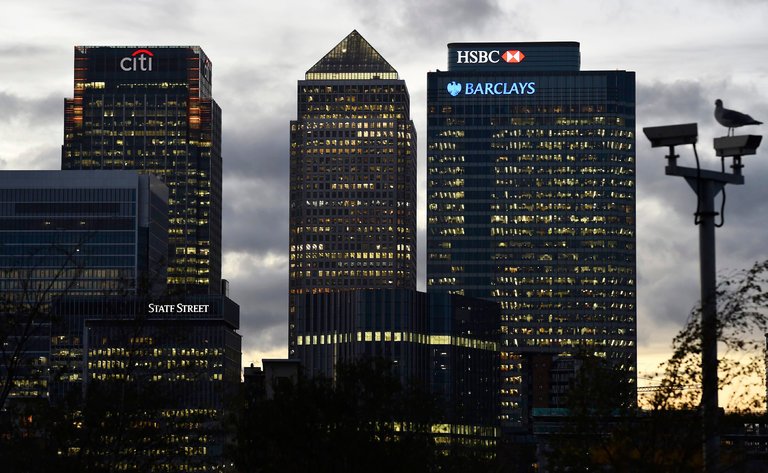By Stephen Morris and John Glover Source: Bloomberg.com Scenarios include pound plunge, consumer-credit losses RBS relatively weaker as mul

Source: Bloomberg.com
- Scenarios include pound plunge, consumer-credit losses
- RBS relatively weaker as multibillion-dollar U.S. fines loom
U.K. banks are bracing themselves for their grades in the toughest round of stress tests yet, with the fate of their dividends and strategies at stake as the Bank of England models how the seven largest British lenders will cope in another crisis.
On Tuesday the central bank will reveal how they fared in a scenario that includes sharp declines in global and domestic growth, the pound losing a quarter of its value, and deep consumer loan losses driven by surging interest rates and unemployment. While analysts forecast all will overcome the basic hurdle rate — which differs between banks — the results will reveal how much spare capital they can return to investors.
This year’s examination “combines a more severe stress scenario and higher capital hurdles,” making it the strictest so far, Goldman Sachs Group Inc. analysts led by Martin Leitgeb said in a Nov. 22 note. The focus will be on Barclays Plc, Lloyds Banking Group Plc and Standard Chartered Plc because they are all trying to increase or restart dividend payments, they said.
Responding to the aftershocks of the financial crisis, four years ago the BOE started annual health checks of the banking system, theorizing what the results could be from increasingly severe economic and geopolitical shocks. Royal Bank af Scotland Group Plc, still owned by taxpayers after a bailout in 2008, failed last year’s test and was forced to bolster capital. Barclays and Standard Chartered had some capital inadequacies, but neither was required to submit a new plan as they were deemed to be on the right track.
Final Hurdle
The test comes against a backdrop of Brexit-related uncertainty and soaring consumer credit in the form of car finance and credit cards, which in June prompted the BOE to order banks to boost their capital buffers by 11.4 billion pounds ($15.1 billion).
“We believe the key focus will be on Barclays, as we expect it to have the lowest buffer to its hurdles and its large U.K. consumer exposure,” Goldman Sachs’s Leitgeb said. The bank halved its dividend to 3 pence last year to conserve capital as it sold unwanted assets and attempted to improve earnings at its investment bank.
Lloyds will be “closely watched” because it has a higher hurdle rate to pass this time, and the largest exposure to the slowing U.K. economy, Leitgeb said. A good result at Standard Chartered “could be a catalyst” for it to restart dividend payments, after suspending them in 2015 amid billions of losses on bad loans.
As for RBS, “stress test performance will remain weaker on a relative basis due to litigation risk,” with the firm still expecting to pay a multibillion-dollar settlement for a U.S. probe into mortgage-backed securities, JPMorgan Chase & Co. analysts led by Raul Sinha said in a Nov. 17 report.
Severe Plunge
The test scenario this year features a 4.7 percent plunge in U.K. output and a 2.4 percent peak-to-trough contraction in global gross domestic product. The pound crashes 27 percent versus the dollar, and house prices devalue by a third, while the Bank of England’s main interest rate surges to 4 percent and inflation climbs to 5 percent.
The hurdle rate requires all lenders to retain capital equivalent to 4.5 percent of their assets weighted by risk, plus “Pillar 2A” — a requirement that varies depending on the specific risks for each bank — in the stressed scenario. The biggest banks also have to meet a so-called systemic reference point, a higher threshold reflecting their global significance.
The stress test results coincide with the release of the BOE’s twice-yearly Financial Stability Report. This sets out the Financial Policy Committee’s view of the current health of the U.K.’s system, assesses risks to stability, and gives the officials’ take on the outlook.
The FPC has said it plans to raise banks’ countercyclical capital buffer to 1 percent at its November meeting “absent a material change in the outlook.” The buffer is a layer of capital built up in good times and available to support lending when the economy is less favorable. It is currently set at 0.5 percent and an increase will become binding a year later.
The latest test is also the first to feature an “exploratory” scenario in addition to the annual cyclical scenario. The separate test over a seven-year horizon has asked banks to detail how they’ll change their business models if their returns remain stagnant below the minimum that investors expect from the sector — a measure known as the cost of equity. That minimum is considered to be about 12 percent.
One potential subject for the BOE’s next exploratory scenario in 2019 could be the impact of Brexit on the U.K. financial system, according to Rob Smith and Steven Hall, U.K. financial risk specialists at KPMG.
“If the scenario will be ‘hard Brexit,’ that would generate a lot of public interest,” Smith said in an interview. “That could include a severe macro and market shock, but also incorporate potential bank business model changes, declines in asset quality and increased operating costs.”
The other lenders covered by this year’s test are Banco Santander SA’s British arm and Nationwide Building Society. Overall, the seven firms account for about 80 percent of the outstanding lending by banks supervised by the BOE’s Prudential Regulation Authority.

